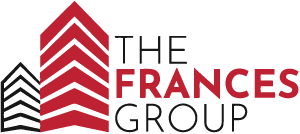
Viewers may see more TV and movie special effects that make actors appear closer together. The actors may be working with digital scripts. And staff may be eating individually wrapped meals at the craft services table. Those are parts of a blueprint submitted by leaders of major entertainment studios and unions to governors in California and New York for safely reopening film and TV production property.
An industry task force, which includes executives from Amazon, Apple, ViacomCBS, Disney, HBO, NBCUniversal, Netflix and Sony, drew up the 22-page white paper that suggests numerous hygienic, distancing and other workplace protocols as part of an effort to find a way to help keep workers safe and allow production to begin after shutting down in mid-March to stem the spread of the coronavirus.
The group this week sent the paper to California Gov. Gavin Newsom and New York Gov. Andrew Cuomo, who must ultimately sign off on any reopenings. Those could still be several weeks away.
“These recommendations are intended to address the circumstances under which production can safely resume,” according to a report sent to the governors this week, which was also obtained and posted in full by the industry news website Deadline. “The Task Force recognizes that COVID-19 is a new disease and many of the facts surrounding COVID-19 are still being determined.”
Media producers were hungrily boosting their commercial space footprints before the coronavirus pandemic shut down the industry. U.S. production companies now remain largely in stand-down mode as they await resumption of activities in California and New York, where media companies are either headquartered or have the bulk of their studio and post-production facilities along with skilled workers.
A spokesman for Newsom told CoStar News that the governor’s office is developing its own plans for updated standards in reopening media production. Cuomo’s office did not immediately respond to requests for a comment.
The media task force is calling for preventive measures similar to those already put forward in other industries, related to cleaning workplace and equipment surfaces, wearing masks, maintaining social distancing and avoiding communal forms of dining and other activities that could spread the coronavirus.
In all, the precautions were laid out with help from almost all corners of the industry. The task force also included representatives of trade unions and guilds representing workers in more than 40 sectors, such as producers, directors, actors, accountants, mechanics, hair and makeup artists, lighting and other technicians.
“Very comprehensive,” said Carl Muhlstein, international director in Los Angeles for brokerage JLL, in speaking with CoStar News about the newly issued Hollywood blueprint. “It seems to respect all of the people they would need to be looking out for in a production process.”
He said media producers have the advantage of being able to control enclosed environments to limit foot traffic, and use special effects to minimize interaction among workers, and the task force guidelines appear to have been well vetted by legal and medical consultants to address most production situations.
What’s needed next, Muhlstein said, is consistent guidance from California and other states as to how to navigate common office work-related spaces like elevators where there is less control over traffic. Media companies face the same potential legal and liability issues as other companies if workers get sick in an office setting.
In Georgia, the nation’s third-largest production hub after California and New York, the governor’s office in late May issued an 11-page digital booklet of guidelines for resuming productions, as that state was among the first in the nation to reopen many types of businesses. Georgia’s guidelines include reducing the number extras on film sets, conducting on-set temperature checks, staggering catering times and avoiding the sharing of equipment.
Future Filming
“These recommendations set forth the consensus of the Task Force and outline guidance regarding protective measures to be used, including regular screening, diagnostic testing, use of personal protective equipment, cleaning and disinfecting work sites, and appropriate response should an employee contract COVID-19 or be exposed to it,” the task force report’s introduction states.
For media productions, that means actors would be kept as far apart as possible for the briefest periods as possible, using editing and special effects if needed to put those performers in the same scene. That editing will need to be done on computers working remotely, along with virtual writers’ rooms and other conference-oriented tasks.
More precautions will be taken to monitor distancing and foot traffic inside trailers and other confined spaces where makeup and hair stylists can’t avoid close contact with performers. Digital over paper will be emphasized for scripts and other documents regularly distributed by production offices.
Casting and location scouting will initially be done remotely, and the industry plans to minimize use of on-location crowds or street scenes where control of foot traffic is not feasible. The guidelines say productions should also avoid remote indoor locations that recently have been occupied or used by people who may have been infected with the coronavirus.
“At this time, the use of live audiences is discouraged,” the guidelines state, though live audiences eventually might be used on a “case by case” basis with studio audience members undergoing symptom screenings, wearing facial coverings and maintaining six feet of distance among themselves and from performers on stages.
The media companies’ studio and office landlords in the Los Angeles area, such as Hudson Pacific Properties, have recently said they are looking forward to the return of media production, as many producers will likely be having extended production schedules at the outset to make up for lost time.
Those extended schedules, Hudson officials recently noted, will likely come with added fees that landlords collect for studio time beyond what’s covered in the producers’ base rental agreements.
A reopening of media production, depending on the state of the larger economy, could also bring a resumption of development and space lease-up patterns used in places such as West L.A. and the region’s South Bay area, which before the pandemic had heightened interest from media and tech firms as space grew harder to find in places including the Hollywood neighborhood.
Netflix, HBO, Apple and Amazon are among the firms recently boosting their production presence in the Los Angeles area, as several companies roll out new streaming platforms.
Muhlstein said media companies have about five years’ worth of productions in various stages of completion and are itching to get back to work, but there are still uncertainties about openings for movie theaters, which remain vital for many producers’ distribution and revenue-generation models.
Otherwise, he said, local studio properties are well guarded and likely haven’t had significant effects from recent nationwide street protests stemming from the death of George Floyd, a black man who died while in police custody in Minneapolis. But looting amid the unrest has possibly derailed some retailers, restaurants and other support businesses that were poised to capitalize on the return of local foot traffic generated by studios.
“Those are the businesses that have really been set back right now,” Muhlstein said, noting those operators play a key role in the L.A. region’s biggest single economic engine that employs more than 200,000.
“It’s an entire ecosystem,” he said.
Author Credit: Lou Hirsh, Costar
